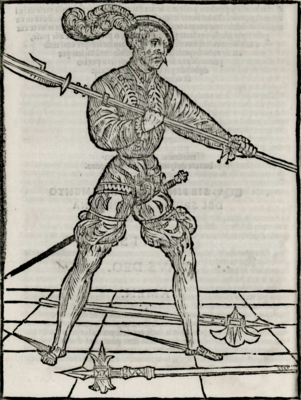Today we take a brief look at how armored combatants may have used a weapon like a glaive. Polearms like this are pictured extensively in manuscripts and marginalia of the 14th and 15th centuries in Western Europe, usually as a weapon associated with armored warriors of relatively high class.
 Arms and Armor 15th century glaive.
Arms and Armor 15th century glaive.
Although we are not aware of any fighting books that specifically reference how to fight with a glaive, their use was certainly similar to the use of other polearms of the time, on the use of which we have many valuable instructions.


Two images of polehammer techniques from Fiore de Liberi

Italian Bill use from Marozzo's Opera Nova.
 Glaive used in a boarding action
Glaive used in a boarding action

Nathan demonstrating glaive use in armor

An armored man with a glaive and sword

Unarmored Dukes of Berry and Bretaigne with Glaives
As always, our swords are entirely made by us at our shop in Minneapolis, MN out of 6150 carbon steel, hardened and tempered to 50-52 Rockwell. Our swords and other weapons are made to look, feel, and function just like the historical originals on which they are based.
Check out the video below!

Nathan Clough, Ph.D. is Vice President of Arms and Armor and a member of the governing board of The Oakeshott Institute. He is a historical martial artist and a former university professor of cultural geography. He has given presentations on historical arms at events including Longpoint and Combatcon, and presented scholarly papers at, among others, The International Congress on Medieval Studies.
Craig Johnson is the Production Manager of Arms and Armor and Secretary of The Oakeshott Institute. He has taught and published on the history of arms, armor and western martial arts for over 30 years. He has lectured at several schools and Universities, WMAW, HEMAC, 4W, and ICMS at Kalamazoo. His experiences include iron smelting, jousting, theatrical combat instruction and choreography, historical research, European martial arts and crafting weapons and armor since 1985
